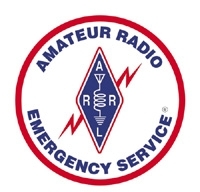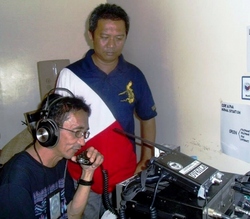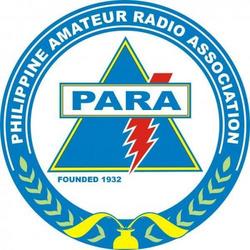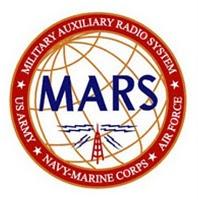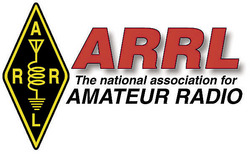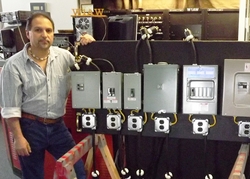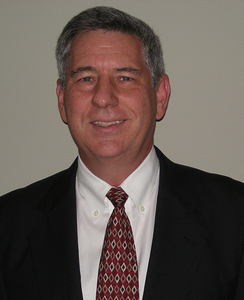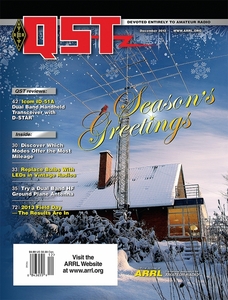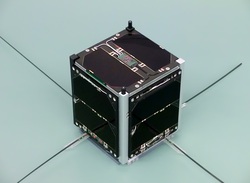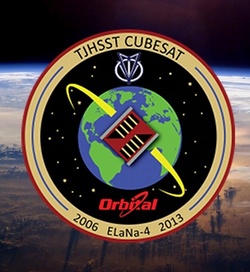 November 21, 2013 John E. Ross, KD8IDJ, Editor
| |||||||||||
Please note! There will be no editions of The ARRL Letter or ARRL Audio News on Thursday, November 28. Both will resume December 5. Public Service: Amateur Radio Volunteers Supporting Emergency Communication in Storms' Wake A late-season, multistate outbreak of tornadoes and high winds on November 17 killed six people in Illinois and injured hundreds of others, some seriously. ARRL Illinois Tom Ciciora, KA9QPN, reported November 18 that Peoria County ARES Emergency Coordinator Fritz
Bock, WD9FMB, has responded with a team of volunteers to a Central Illinois Division Red Cross request for emergency communication support between sites in Washington, Illinois -- a town of approximately 11,000 residents and hit hardest by the storm activity -- and the Red Cross office in Peoria. Most of the injuries and one of the fatalities occurred in Washington. Forecasters say the tornado that hit the town was an EF-4 on the five-step Fujita scale. "Fritz tells me that VHF and UHF FM systems are intact and operating, which will cover the communications paths," Ciciora said. "Communication support will be provided between the Washington Methodist Church, the Tazewell County EOC, and the ARC office in Peoria." Ciciora noted that Tazewell borders Peoria County. Illinois Gov Pat Quinn told reporters this week that the storms destroyed or badly damaged upward of 400 homes in Washington, Illinois, displacing thousands of residents. The storms also affected Michigan, Indiana, Missouri and Wisconsin. Seven Illinois counties, including Peoria and Tazewell, have been declared disaster areas. Many residents remain without power. Hams Up Their Game in Philippines Typhoon Response Nearly 2 weeks after Typhoon Haiyan (Yolanda) hit the Central Philippines in one of the worst natural disasters in modern history, survivors are slowly getting food, water, and medical attention and supplies, along with shelter, communication, and electrical power. Now, the Philippine Amateur Radio Association (PARA) is hoping that requests for emergency communication gear will provide the means for PARA's Ham Emergency Radio Operations (HERO) network to enhance its presence and efforts -- especially in less-populated and harder-to-reach areas. At the request of communication authorities in the Philippines, PARA has begun expanding locations and facilities. PARA Vice CEO Ramon Anquilan, DU1UGZ, said PARA has been working with the National Telecommunications Commission (NTC) and the National Disaster Risk Reduction and Management Council (NDRRMC).
"The NTC has requested that the coverage from Borongan be expanded, to the adjacent town and so on. The idea is to set up an HF station in the farthest town that can be accessed," Anquilan said. "Given the new task that NTC wants us to do, we will be needing stations that can be deployed and dismantled at a moment's notice." Anquilan said discussion at the meeting focused on putting assets on the ground to fill the gaps. "It seems only PARA has a local station -- Lester, DV5PO -- in the capital town of Borongan, East of Samar," he said. DV5PO is expected to be given more diesel fuel for his generator, so he can continue supplying vital information -- a request agreed to at the NTC meeting. "This is going now into the difficult phase," Anquilan said. "The operators that are needed should come from the outside, because our locals will not budge from their locations as they have to fend for themselves and their families -- they too are victims of this disaster." He said other radio amateurs are willing but don't have the necessary equipment. In Tacloban, where 90 percent of the buildings were destroyed, the Negros Oriental Radio Assistance Dumaguete (NORAD 7) team is on its way to provide an additional HF station. "The team is bringing much needed relief goods, and Rey Boy Manaay, 4D7DSW, and Eric Mite, DW7DTR, who are trained in rescue," Anquilan said. He's hoping to replace the old equipment Nathan, DU5AOK, is using with gear provided from the outside. He said Darwin Torres, 4F1FZE, an experienced operator, will join the effort at Tacloban. PARA is hoping to improve VHF coverage of the area, with HF remaining a critical component. Torres is embedded in a relief team arriving from Manila.
Anquilan said there are two repeaters in Tacloban with no power, "so we need alternative energy -- batteries and solar power." He said a team can be deployed to Samar, perhaps Guiuan or further west. "We need equipment to link Samar to Tacloban. This will mean a VHF repeater available to a large portion of the affected site of Samar." The farthest affected place is Coron in Palawan, a famous tourist spot. Clifford Certeza, DU1CC, is headed there to set up an HF station. Anquilan said that there was no relay station from Palo down the coastal municipalities on the eastern seaboard of Leyte. A HERO station, part of the club ACCESS 5 in that area, has not been heard from since the typhoon hit. Another station is needed to provide the link, he said. "PARA and its HERO network have a long task ahead, as it slowly gains the necessary resources and recognition for the emergency communications," Anquilan said. Jojo, DU1VHY, NTS Chairman and CFO of the Philippine Amateur Radio Association pointed out this week that the CQ World Wide DX CW contest is coming up this weekend, and excitement is growing. "However, here in the Philippines, our enthusiasm is a bit tempered," he said. "[H]ams in the Philippines are using the frequencies 7.095, 7.119, and 7.151 MHz for emergency operations." DU1VHY expressed the hope that contesters and others will avoid these frequencies in deference to emergency traffic. -- Thanks to Jim Linton, VK3PC, Chairman IARU Region 3 Disaster Communications Committee Public Service: MARS 48 Hour Test Deemed "Unequivocal Success" Military Auxiliary Radio System (MARS) Army MARS Chief Stephen Klinefelter has declared the multifaceted national communication exercise early this month "an unequivocal success," and he thanked all three MARS branches and the other participating military units and civilian entities for their "hard work, long hours, and dedication to the mission." The MARS station at ARRL's Maxim Memorial Station, AAN1ARL, took part in the November 3-5 exercise, which Klinefelter said was "designed to test and stress our networks and our members' ability to process and respond to a variety of message traffic."
In the drill scenario, a catastrophe had wiped out normal telephone and Internet links. Communication was by voice and digital HF radio, the bulk encrypted as it would be in a hostile contingency. From start to finish, nets throughout 48 states operated without a break, with military MARS stations overseas also connected -- more than 5500 hours of operation by Army MARS participants alone. Eastern Massachusetts Amateur Radio Emergency Service (ARES) handled exercise traffic as well. US Army MARS representatives met with ARRL staff at League Headquarters in early October to discuss ways the two organizations might collaborate in emergency response activities. Your League: ARRL Files "Symbol Rate" Petition with FCC The ARRL has asked the FCC to delete the symbol rate limit in §97.307(f) of its Amateur Service rules, replacing it with a maximum bandwidth for data emissions of 2.8 kHz on amateur frequencies below 29.7 MHz. The ARRL Board of Directors adopted the policy underlying the petition initiative at its July 2013 meeting. The petition was filed November 15. "The changes proposed would, in the aggregate, relieve the Amateur Service of outdated, 1980s-era restrictions that presently hamper or preclude Amateur Radio experimentation with modern high frequency (HF) and other data transmission protocols," the League's petition asserted. "The proposed rule changes would also permit greater flexibility in the choice of data emissions." Symbol rate represents the number of times per second that a change of state occurs, not to be confused with data (or bit) rate. Current FCC rules limit digital data emissions below 28 MHz to 300 baud, and between 28.0 and 28.3 MHz to 1200 baud. "Transmission protocols are available and in active use in other radio services in which the symbol rate exceeds the present limitations set forth in §97.307(f) of the Commission's Rules, but the necessary bandwidths of those protocols are within the bandwidth of a typical HF single sideband channel (3 kHz)," the ARRL's petition pointed out.
The League said that while bandwidth limitations are reasonable, the symbol rate "speed limit" reflective of 1980s technology, prohibits radio amateurs today from utilizing state-of-the-art technology. Present symbol rate limits on HF "actually encourage spectrum inefficiency," the League argued, "in that they allow data transmissions of unlimited bandwidth as long as the symbol rate is sufficiently slow." The League said eliminating symbol rate limits on data emissions and substituting a "reasonable maximum authorized bandwidth" would permit hams to use all HF data-transmission protocols now legal in the Amateur Service as well as other currently available protocols that fall within the authorized bandwidth but are off limits to amateurs. The League said it's been more than three decades -- when the Commission okayed the use of ASCII on HF -- since the FCC has evaluated symbol rate restrictions on radio amateurs as a regulatory matter. "The symbol rate restrictions were created to suit digital modes that are no longer in favor," the ARRL noted in its petition. Modern digital emissions "are capable of much more accurate and reliable transmissions at greater speeds with much less bandwidth than in 1980." As an example, the League pointed to PACTOR 3, which is permitted under current rules, and PACTOR 4, which is not. Despite PACTOR 4's greater throughput, both protocols can operate within the bandwidth of a typical SSB transmission. "If the symbol rate is allowed to increase as technology develops and the Amateur Service utilizes new data emission types, the efficiency of amateur data communications will increase," the ARRL concluded. ARRL General Counsel Chris Imlay, W3KD, has emphasized that there is no broader plan on the League's part to seek regulation by bandwidth. The FCC has not yet assigned an RM number and put the petition on public notice for comments, and there is no way to file comments until that happens. Your League: ARRL Helps Manufacturer to Resolve Arc Fault Circuit Interrupter RFI Problems The ARRL Lab has worked with a manufacturer of arc fault circuit interrupter (AFCI) breakers to resolve complaints that Amateur Radio RF was causing certain breaker models to trip unnecessarily. Like the more common ground fault circuit interrupter (GFCI), the AFCI is a safety device. Primarily designed to detect problems that could result in a fire, AFCIs detect potentially hazardous arc faults that result from often unseen damage or poor connections in wiring and in extension cords and cord sets. "Several months ago we started receiving reports from amateurs that when they transmitted, their AFCI breakers were tripping," said Mike Gruber, W1MG, the ARRL Lab's EMC specialist. He noted that the issue has been a topic of online ham radio discussions as well as on homeowner sites; it seems that stray RF is not the only thing that can cause a "nuisance trip" of an AFCI. Gruber pointed out that the National Electrical Code (NEC) already requires AFCIs in some household circuits, but not all US jurisdictions have adopted the requirement.
Gruber said that as AFCIs became more common in new construction in the US, reports started coming in that AFCIs in the vicinity -- not just in the radio amateur's home -- would trip in the presence of RF from an Amateur Radio transmitter. While each manufacturer's design is proprietary, most AFCIs detect arcs by monitoring the shape of the alternating current waveform, changes in current levels, voltage irregularities, and the presence of high frequency emissions or "noise." The ARRL Lab dug into the problem. "Last summer we built a test fixture in which we could test any type of circuit breaker," Gruber said. It involved using W1AW as an RF source. Gruber said he bought one of "every AFCI that I could get my hands on," but when the Lab began testing them during W1AW transmissions, none of the devices tripped. A ham in New Mexico who had reported AFCI problems sent some of his breakers to the ARRL Lab, "and those tripped when we tested them," Gruber said. The problematic breakers were certain models made by Eaton Corporation. "We already had an Eaton breaker, an older model, but it did not trip," he noted, adding that the breaker had a yellow button. The newer model, which had a white button, did trip in the presence of RF, however, even at power levels down to about 50 W on 17 meters. Gruber contacted Eaton, and two of the manufacturer's engineers visited ARRL Headquarters in August. "Eaton was extremely cooperative and eager to resolve this," Gruber recounted. "They spent the day with us, going over our test methods and took some of the problematic breakers back with them, eventually developing a modified version. "We have just finished testing the new version of the breaker, and it did not trip during W1AW transmissions and in other tests," Gruber reported. He said the new breaker is still in the queue for UL approval. Eaton Engineering Director Andy Foerster said arc fault detection is challenging, in part because so many common household devices -- such as vacuum cleaners and power tools that use motors with brushes -- create arcing. In information provided to ARRL Eaton engineer Lanson Relyea said that because AFCIs rely on HF emission detection to verify arcing, "any signal that conducts or radiates a signal within the detection band of the AFCI can cause interference and cause the device to trip without the presence of a true arcing condition." Eaton and ARRL agreed that when the manufacturer comes out with any new models of breakers, it will ask the League to test them at W1AW. "It's a win-win situation," Gruber said. Eaton also has agreed to work with anyone having a problem with RF tripping its AFCIs. Hams experiencing unwanted tripping problems with their or their neighbors' AFCIs should first contact the manufacturer. In the case of Eaton breakers, contact Bob Handick (412-893-3746) or Joe Fello (412-893-3745). Read more. Your League: ARRL Southeastern Division Gets New Director The ARRL Southeastern Division will have a new director on January 1. Ballots were counted November 15, and challenger Doug Rehman,
K4AC, of Mt Dora, Florida, narrowly defeated incumbent Southeastern Division Director Greg Sarratt, W4OZK, of Huntsville, Alabama, 961 to 949 votes. Rehman was among challengers who ran against Sarratt in 2010. Sarratt had served as a director since 2007. There was no change in the vice director position. Incumbent Vice Director Jim Millsap, WB4NWS, outpolled challenger George Hawrysko, K4AWA, 1429 to 467 votes. Millsap, of Acworth, Georgia, was appointed in 2012 to complete the term of Andrea Hartlage, KG4IUM, who resigned when she moved out of the Southeastern Division. ARRL President Kay Craigie, N3KN, informed the candidates of the election results by telephone. ARRL International Affairs Vice President Jay Bellows, KØQB, observed the balloting and reported the results. Your League: Tennessee Section Manager Elected to Second Term in Fall Balloting In the only contested Section Manager election this fall, ARRL members in Tennessee have re-elected Keith E. Miller Sr, N9DGK. He received 690 votes, while challenger Randall Smith, KI4OAS, of Gadsden, received 352 votes. Smith is Tennessee's Section Emergency Coordinator. Miller, who lives in Rockvale (near Murfreesboro), will begin his second term as Tennessee Section Manager on January 1. Ballots were counted and verified at ARRL Headquarters on Tuesday, November 19.
These incumbent ARRL section managers faced no opposition and were declared elected for new terms of office beginning January 1. David Drummond, W4MD, Alabama; Jim Larsen, AL7FS, Alaska; Jim Latham, AF6AQ, East Bay; Ron Cowan, KBØDTI, Kansas; Larry Camp, WB8R, Michigan; Bill Kauffman, W5YEJ, New Mexico; Robert Griffin, K6YR, Santa Barbara, and Ed Emco, W1KT, Western Massachusetts. ARRL Delaware Section Manager Frank Filipkowski, AD3M, decided not to run for another term, after serving since 2006. Nominations for the position of ARRL Delaware SM are being re-solicited, since no nominating petitions were received by the September deadline. To be considered valid, a petition must contain the signatures of five or more full ARRL members residing in Delaware. It is advisable to have a few more than five signatures on each petition. Details on how to submit a petition and a sample nomination form are available on the ARRL website. This information also will appear in the January 2014 issue of QST. Your League: The December Digital Edition of QST is Now Available! The digital edition of the December issue of QST is now available to
ARRL members. In this issue . . .
...and much more! Enjoy content you won't see in the print edition. For example, watch a video overview of the Icom ID-51A dual-band, hand-held transceiver with D-STAR. Every issue of QST is filled with the news and features you need to keep active in Amateur Radio. Enjoy this issue! Your League: ARRL to Close November 28 and 29 for Thanksgiving Holiday ARRL Headquarters will be closed Thursday, November 28, and Friday, November 29, for the Thanksgiving holiday. There will be no editions of The ARRL Letter or ARRL Audio News on November 28. Both will resume December 5. There will be no W1AW bulletin or code practice transmissions on November 28 and 29. ARRL Headquarters will reopen Monday, December 2, at 8 AM EST. We wish everyone a safe and enjoyable holiday! Ham Radio in Space: AMSAT-UK FUNcube-1 Satellite in Orbit A Russian Dnepr rocket carried AMSAT-UK's FUNcube-1 -- now known officially as AMSAT-OSCAR 73 -- and 18 other satellites carrying Amateur Radio payloads to orbit at 0710 UTC on Thursday, November 21. Ground stations began receiving telemetry from FUNcube-1 soon after deployment and the satellite appears to be functioning normally. One of the satellites on the launch, UniSat-5, will deploy a number of additional satellites. Among them should be the CubeSats PUCP-SAT-1, HumSat-D, estar-2, Icube-1 and the PocketQubes Wren, Eagle-1 (BeakerSat), Eagle-2 ($50Sat), QB-Scout1. PUCP-SAT-1 intends to subsequently release a further satellite Pocket-PUCP.
As well as UniSat-5 and its associated CubeSats and PocketQubes these Amateur Radio satellites were also on the launch: For a frequency list, see http://amsat-uk.org/2013/11/13/three-amateur-radio-satellite-deployments-in-november/. The latest orbital elements for FUNcube-1 are available at http://funcube.org.uk/working-documents/latest-two-line-elements/. Ham Radio in Space: First High School Satellite Among November Ham Satellite Bonanza The first high school satellite, TJ3Sat, which launched this week
aboard a Minotaur I rocket from Wallops Island, Virginia, was among several satellites carrying Amateur Radio payloads -- two with ham radio transponders -- scheduled to be put into orbit during November. In addition to the Minotaur I launch, other satellites are set to go into space early November 21 (UTC) aboard a Dnepr rocket from Russia, while still others were scheduled to be deployed from the International Space Station. The Minotaur I carried 29 satellites in all. The TJ3Sat CubeSat is a joint project between the Thomas Jefferson High School for Science and Technology in Alexandria, Virginia, and industry partners to design and build a CubeSat to inspire interest in aerospace technology as part of NASA's Educational Launch of NanoSatellites (ELaNa) program. The school says the satellite's main mission is "to provide educational resources to other K-12 education institutions to foster interest in aerospace through the successful design and flight of a CubeSat." Perhaps more to the point for high schoolers, the satellite's Text Speak module will convert text messages into analog voice signals. "Students and other users from around the world can submit text strings to be uploaded to the TJ3Sat website. Approved text strings will be transmitted to the satellite and the resulting voice interpretation will be relayed back to Earth over an Amateur Radio frequency," the TJ3 website explains. The small satellite also will transmit telemetry. Details are on the TJ3Sat website. The school says the November 20 (UTC) launch culminated 7 years of work by more than four dozen students. According to a Washington Post article, the satellite will broadcast its first message to TJ alumni worldwide: "Go Colonials!" -- Thanks to AMSAT News Service, AMSAT-UK, and NASA Just Ahead in Radiosport
Find conventions and hamfests in your area. ARRL -- Your One-Stop Resource for Amateur Radio News and Information Join or Renew Today! ARRL membership includes QST, Amateur Radio's most popular and informative journal, delivered to your mailbox each month. | |||||||||||
